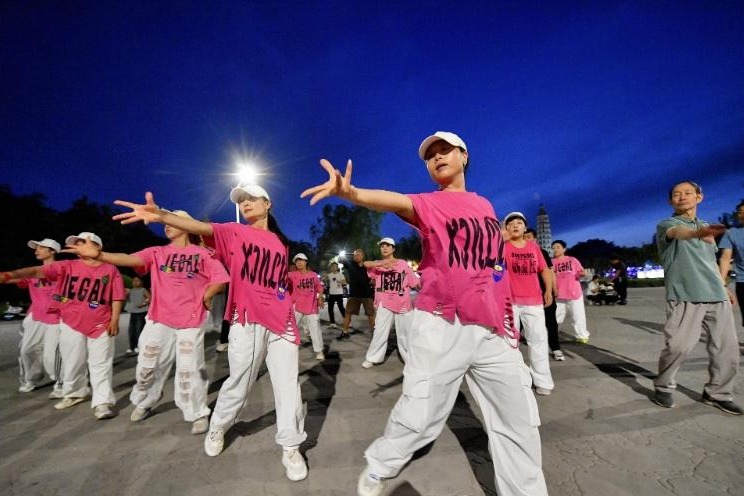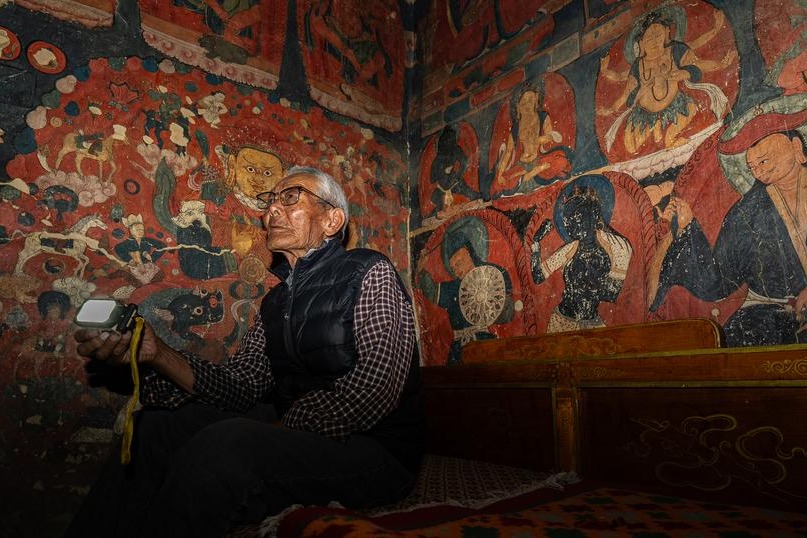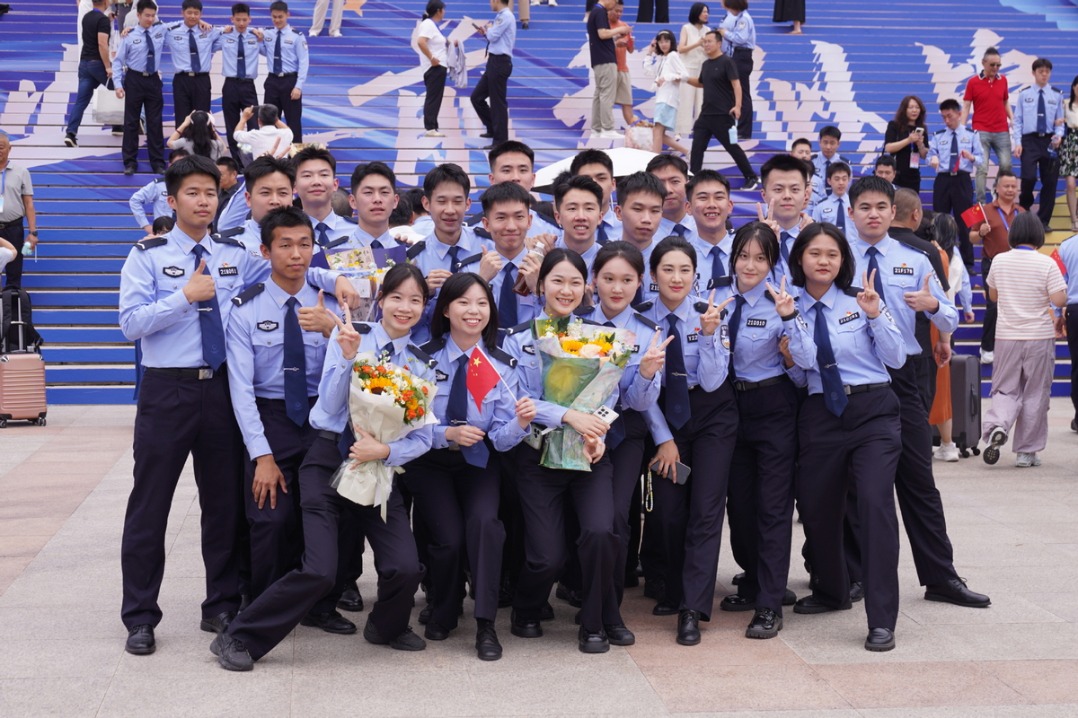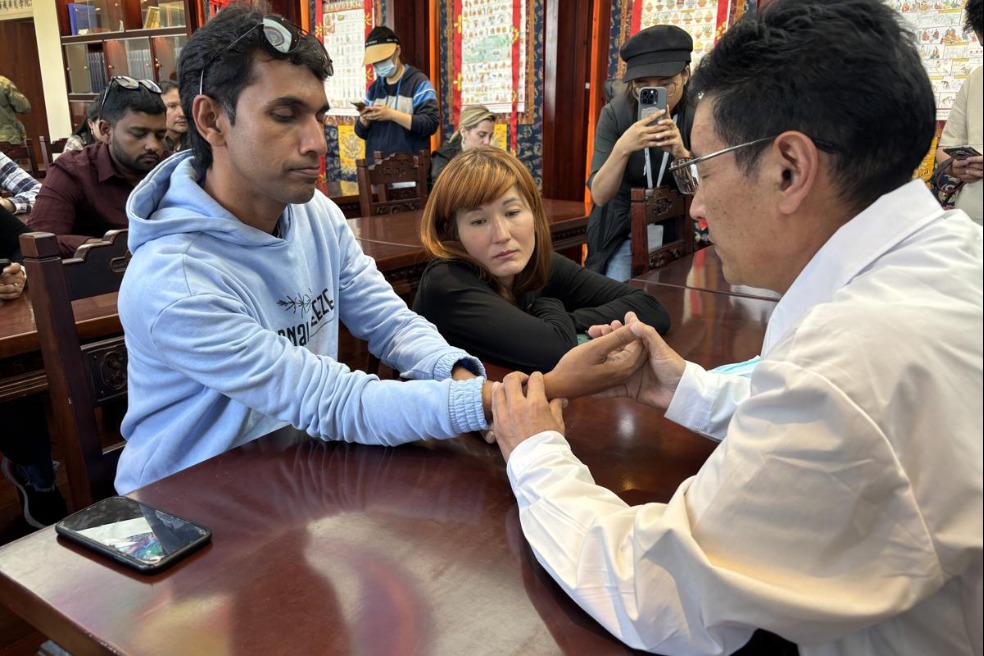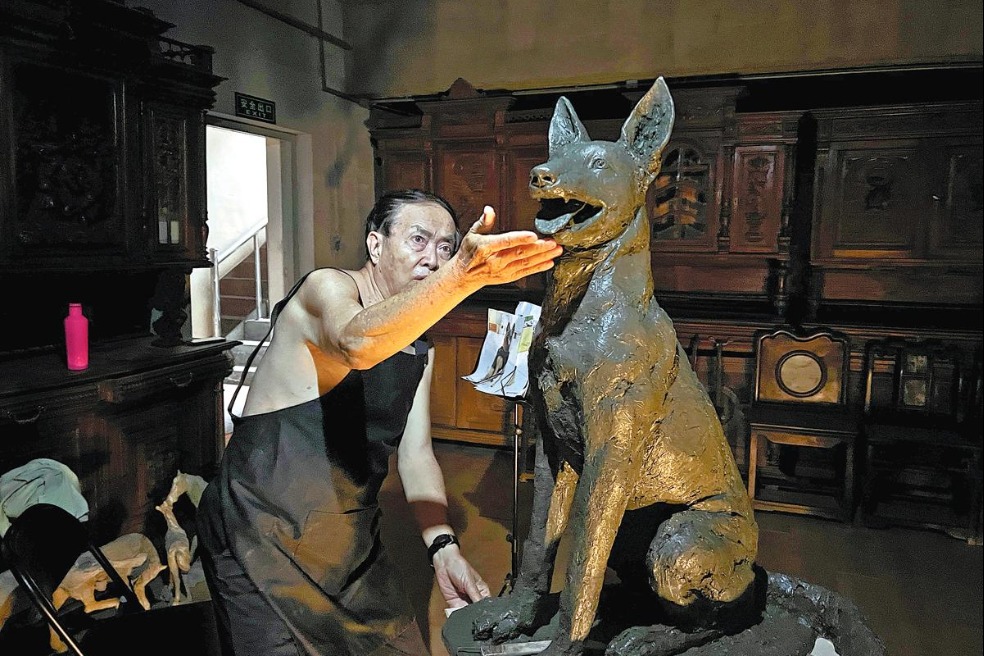Carrying the torch

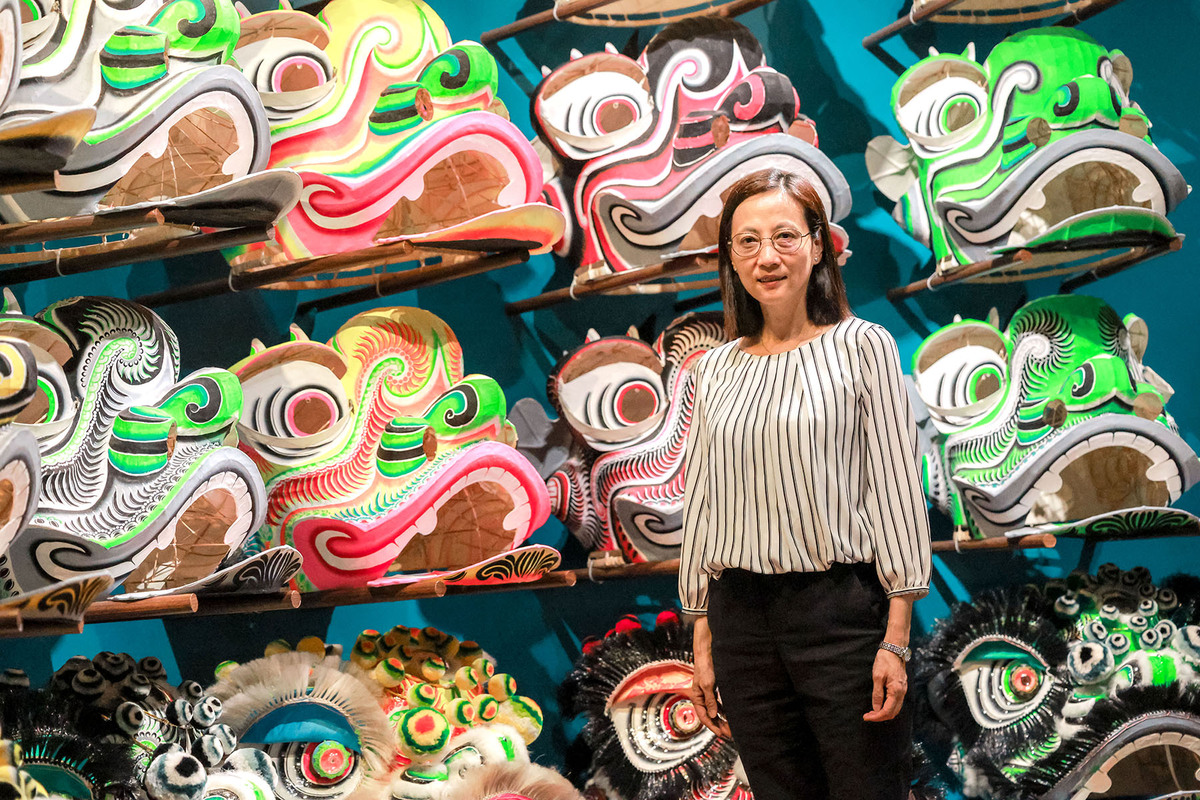
For the rich tapestry of intangible cultural treasures of the nation and Hong Kong to live on for generations, keepers and practitioners have their due role to play, says Judith Ng Suet-kwan, head of the special administrative region's Intangible Cultural Heritage Office.
Hong Kong made deep strides in this respect when, earlier this year, two of the city's cultural guardians dedicated to promoting and preserving the Wong Tai Sin belief and customs, as well as the Hakka Qilin (Chinese unicorn) dance, were inscribed as national-level representative bearers after the two items made their way onto the list of the country's ICH in 2014.
The beliefs and customs of Wong Tai Sin — a deity worshiped at Hong Kong's favorite and probably busiest temple for residents seeking to have "every wish" of theirs fulfilled, particularly at the start of the Chinese New Year — date back to 1915 when Taoist practitioners in Guangdong province fled military conflicts to take refuge in Hong Kong. Such beliefs and customs, originating in Zhejiang province's folk religion that traces back to the Western Jin Dynasty (265-316), were introduced to the Lingnan region during the mid-late period of the Ming Dynasty (1368-1644).
The Hakka Qilin dance — the spirited and agile ritual performance that has been practiced for more than 200 years in Hong Kong — is another heritage icon of Hakka traditions. For centuries, the Hakka clan gradually moved south to escape war and famine. They became known as the "guest" people who were the very first immigrants and one of Hong Kong's major ethnic groups.
'Mission of the times'
With more legacies winning the recognition they deserve, Ng doesn't shy away from the fact there is a critical shortage of talent to take up the mantle of traditions.
This underscores "the mission of the times", she points out, with much work still to be done to ensure the survival and revival of the city's cultural heritage.
Times have changed and filial piety — a tenet of Chinese family values for thousands of years — won't be enough for young people to take the baton from their parents and continue family legacies. Citing the government-funded transmission and training program for Hong Kong's cheong-sam-making techniques, Ng says the city is racing against time to attract fresh blood to carry the torch.
Cheongsam (qipao), literally meaning "long clothes" in Cantonese, was widely embraced by Hong Kong women in the 1950s and 1960s as part of their everyday wardrobe after it was popularized in Shanghai in the late 1910s.
The craftsmanship involved in making a cheongsam earned national heritage status in 2021 at a time when the dress, recognizable for its form-fitting silhouette, no longer served as women's go-to outfit, and experienced masters saw little chance of passing on their crafts.
The transmission and training program, says Ng, engages young people and Hong Kong's dwindling breed of cheongsam masters to make a collective effort to preserve the traditional technique.
She was impressed by how master tailors have fought tooth and nail to keep the skills alive by keeping a pool of students. "They take it seriously and impart all their expertise unreservedly. Most of their trainees have a basic understanding of traditional hand-sewing techniques and a strong sense of duty to safeguard and pass on the craftsmanship to the next generation," says Ng.
The century-old craftsmanship is also being reimagined by young trainees through experimentation with new possibilities, such as the use of innovative fabrics.
Today, a program of this kind encompasses Hong Kong's 17 intangible cultural treasures. Ng aims to expand it to give more alluring inheritances from Chinese culture a new lease of life. In a broader sense, more than 200 ICH projects had received funding exceeding HK$130 million ($16.6 million) as of last year under a program launched by the ICH Office in 2019 with the commitment of HK$300 million.
Enduring commitments
Behind the scenes, Hong Kong's yearslong ICH list-making traces its beginnings to 2003 when UNESCO adopted the Convention for the Safeguarding of theIntangible Cultural Heritage. China led the charge in ratification and extended it to the HKSAR in 2004.
Echoing the convention's enforcement in 2006, the alarming realization that many unique cultural practices and crafts in the city were on the verge of being lost to ravages of time helped create the ICH Office, which was then a unit under the Hong Kong Heritage Museum, and became an office in 2015 as heritage conservation came under a growing spotlight.
From 2005-09, China carried out its first nationwide ICH census, counting nearly 870,000 resources. The sheer number of elements testified to the tremendous variety of arts and culture found in a country as geographically vast, historically rich, and ethnically diverse as China.
As an intrinsic part of a national list-making project, Hong Kong had its first local ICH inventory promulgated in 2014, covering 480 items of craftsmanship, performances, traditions and rituals, after a three-year territory-wide survey. This was followed by its first ICH representative list of 20 items announced in 2017 as "a basis for the government prioritizing resources and safeguarding measures, especially for those of high cultural value and with an urgent need for preservation," says Ng.
The fundamental principle and prerequisite for inscription is that ICH must manifest in five domains in accordance with the convention — oral traditions and expressions; performing arts; social practices, rituals and festive events; knowledge and practices concerning nature and the universe; and traditional craftsmanship. But for an item to be a genuine and faithful expression of Hong Kong's heritage, it must reflect the city's layered history, shared memory and resonate meaningfully with the local community, Ng insists.
At the end of the day, what brings Hong Kong together is its people.
"As long as locals and visitors alike continue to cherish these heritages, they will retain their living pulse and remain an essential component of Hong Kong's cultural fabric."
- Sci-fi aerospace exhibition opens in Beijing with immersive space exploration
- China Coast Guard intensifies patrols in South China Sea
- Explore Zhengding's bustling night market food heaven
- Taiwan leader criticized for independence rhetoric
- Guangdong, Macao launch self-service terminals to enhance integration
- New plan supports disabled job seekers

















